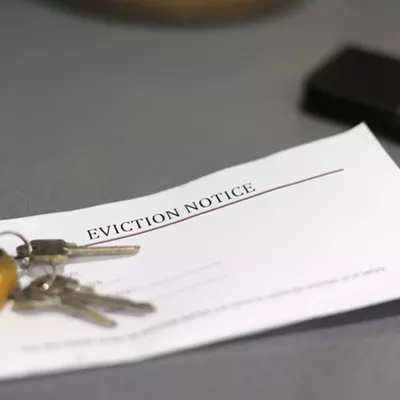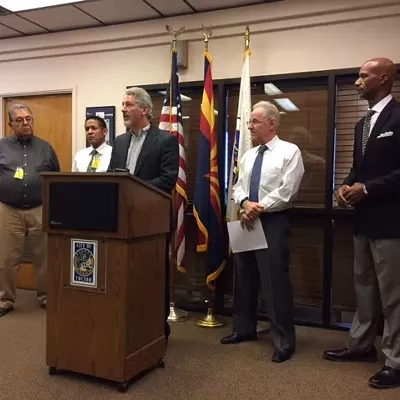What's the cause? A soft Tucson economy? Tough state laws? A combination of both? Or--in the absence of hard evidence--is the number of immigrants actually not decreasing at all?
"It's all anecdotal (evidence)," emphasizes Dave Taylor, demographic guru for the Pima Association of Governments. "It's one bar story after another."
Since it's almost summer, a cold beer at a cozy neighborhood tavern sounds enticing. But first, material gathered from apartment-rental statistics, employment figures and educational enrollment records should be reviewed.
According to a report released earlier this year by the Pew Research Center, in 2005, "unauthorized migrants accounted for about 7 percent to 8 percent of Arizona's population, and about 10 percent of its labor force."
Taylor guesses there are approximately 80,000 to 90,000 undocumented immigrants in Pima County, with about one-third of them being in the labor force. While these are large numbers, Taylor believes that even if some of these people have, in fact, left town, it would result only in a small dip in the area's overall population-growth rate.
The extent of this potential population loss is difficult to gauge from the information available.
In the housing sector, Shannon Wallace, director of government relations for the Arizona Multihousing Association, has seen some indications that it might be happening, although she admits that the evidence of out-migration by undocumented people is hard to track.
"In Tucson, we've noticed a decline in renters and attribute that to the laws in affect now," Wallace says. "Those people (who have departed) may not have been here illegally, but could have left because they didn't feel welcome or had a family member who was here illegally."
Recent information on the community's apartment stock appears to back up Wallace's thoughts. It shows vacancies in 2008 rising compared to a year ago in every part of Tucson--now being 9 percent or higher in several places.
That data may be significant, since as the Pew Hispanic Center pointed out in January: "Hispanic heads of households in Arizona are less likely than non-Hispanic household heads to live in owner-occupied homes."
This report also indicates that "there are five major occupations in Arizona in which foreign-born Hispanics account for at least one-fifth of employment." These are agriculture, building cleaning and maintenance, construction, production and food preparation and serving.
A study released last week by the same Pew organization reported unemployment among Mexican immigrants--whether in the United States legally or not--rose substantially from early 2007 to the same period in 2008. It increased by almost 3 percentage points to 8.4 percent. On the national level, foreign-born Hispanic workers now have a higher unemployment rate than those born in the United States. The cause of that shift, which hasn't been seen since 2003, was primarily the loss of construction jobs.
David Pittman of the Arizona Builders' Alliance represents commercial builders in town and has heard the anecdotal information about out-migration of undocumented immigrants.
Pittman says the companies he deals with haven't experienced any difficulty finding construction workers. That's because the dramatic local downturn in new housing starts has provided a sufficient supply of people for those builders with whom he works.
The potential impacts of a slow economy and strict laws might also be seen in public-school enrollment figures. (On the other hand, competition from charter and private schools may also have an effect on these numbers.)
Information supplied by the Sunnyside School District shows total enrollment rose slightly between January 2007 and January 2008. (Representatives of Amphitheater School District didn't respond to a request for similar information.)
On the other hand, total enrollment fell by 3 percent in the Tucson Unified School District (TUSD) between the 100th day of school for the 2006-2007 school year and same date 12 months later. This decrease was an acceleration of a trend TUSD has been experiencing for several years.
Six schools in the district--Duffy, Johnson, Ochoa, Reynolds, Rogers, and Naylor--had double-digit enrollment losses over this 12-month period. (At least in Ochoa's case, the decrease can be attributed to the district moving sixth-graders out of the school.)
The school with the highest percentage decrease in enrollment--Reynolds--is on the city's eastside. It also had the highest percentage decline in Hispanic students, losing 43 of these pupils.
Whether this figure and others like it point to a decrease in the number of illegal immigrants living in Tucson, that remains to be proven.
As Taylor summaries of using this type of information to draw meaningful conclusions: "It's like standing in quicksand and trying to lift something."










